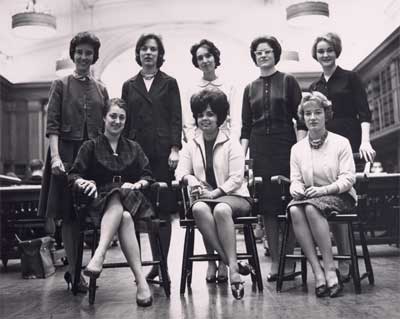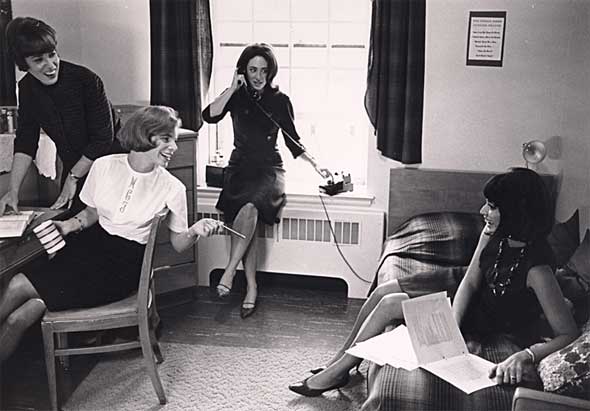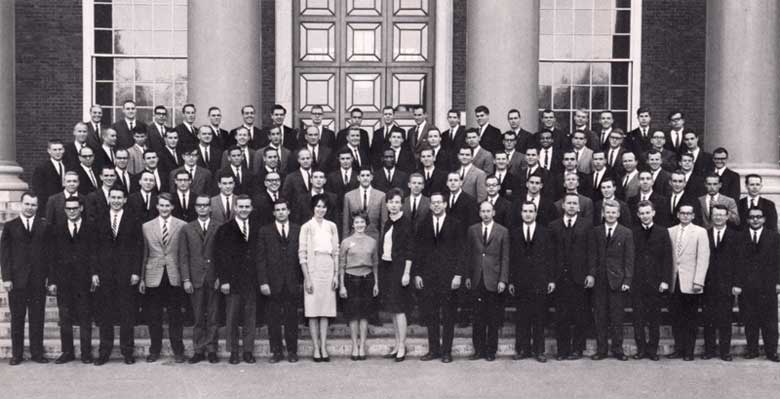

While I am sure that each of you has very definite reasons for electing to attend HBS, I feel that it is vital that every woman have a fairly definite reply to the question “What’s a nice girl like you doing in business school.” Memo addressed “To the Women of the Class of 1971” from “Robin Wigger, Class of 1970”
Archives Vertical Files
In the fall of 1963, eight women enrolled in the MBA degree program at Harvard Business School as fully matriculated students and the “daring experiment” begun by Radcliffe College in 1937 ended.
In December 1962, Harvard Business School faculty voted unanimously for women to be directly admitted to the first year of the full MBA degree program. With an original target for implementation of 1964–1965, the schedule was moved up when the Harvard-Radcliffe Program in Business Administration was ended. In April 1963, the first woman accepted admission to the MBA class that would graduate in 1965.
In this inaugural co-ed year, a total of eight women entered HBS as first-year students. They were joined for the second year by four HRPBA graduates. By the 1965 graduation, the MBA, DBA, and Executive Education programs at HBS were fully co-educational.
Enrollment increased rapidly after “the first eight,” and more than fifty women were registered as MBA students by the 1969–1970 academic year. In the early years they lived across the river, either at the Radcliffe Graduate Center or in private residences. However, in 1969, Harvard Business School embarked on yet another “experiment,”9 and four first-year women moved into an on-campus suite in McCulloch Hall.
From the beginning, women gathered in groups to discuss issues relevant to their situations. The Women’s Student Association, established in 1972, grew from these informal committees, and continues to this day to raise awareness of women’s issues on campus and connect students with women in business, creating “the foundation for a powerful network of future female business leaders.”10 The percentage of women at HBS has grown to 35 percent of the student population, and they are full participants in all aspects of the HBS community.
The graduates of the HRPBA, along with the first women MBAs at Harvard Business School, broke new ground in business education. Some chose fields that traditionally were more receptive to women in leadership positions, such as retail, publishing, nonprofit management. Others ventured into male-dominated fields such as banking, investment management, government, insurance, and manufacturing.
As these women moved into the marketplace, they were forced to contend with prejudice in many forms, from subtle remarks to the proverbial “glass ceiling” limiting their advancement. However, a powerful new support network formed, taking root initially on the Radcliffe and Harvard Business School campuses then expanding into the workplace. By building on their experiences, these early graduates shaped a new culture of education, opportunity, and leadership for women in business nationally.
- Baker Library | Historical Collections | Site Credits
- Contact Email: histcollref@hbs.edu



